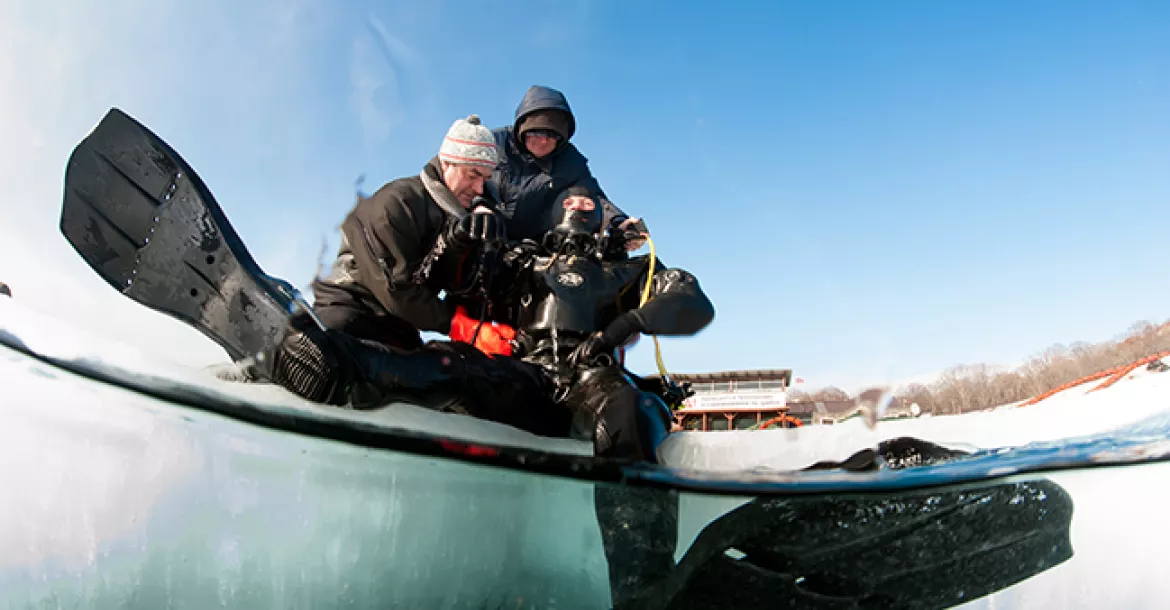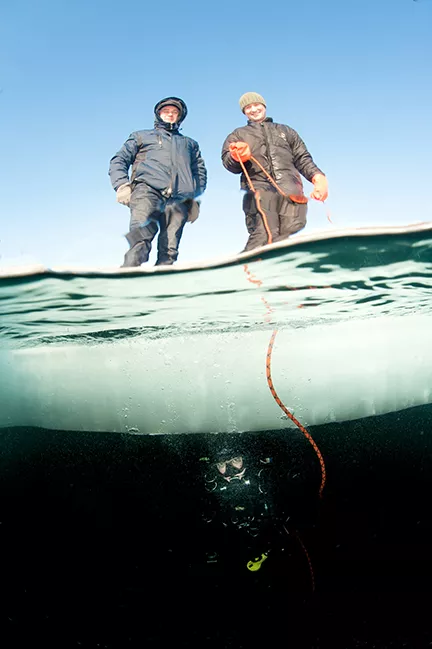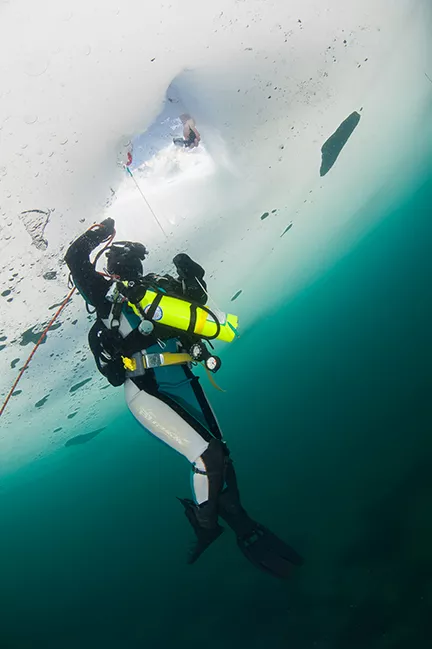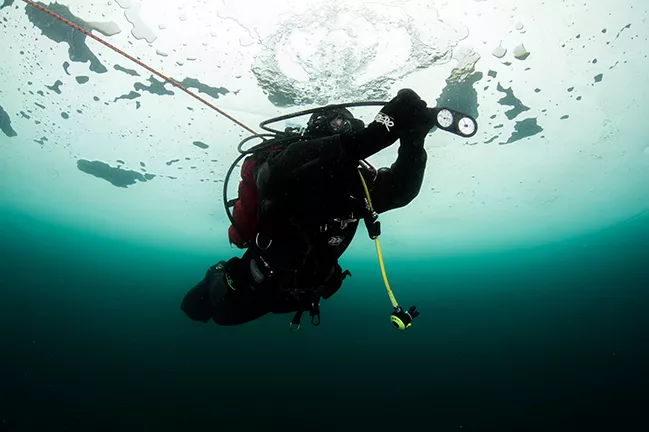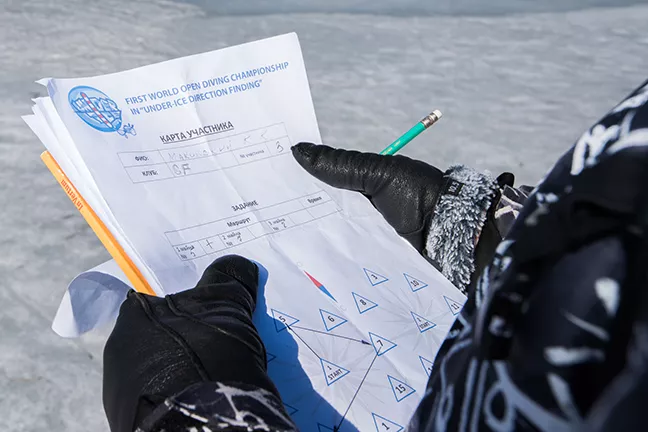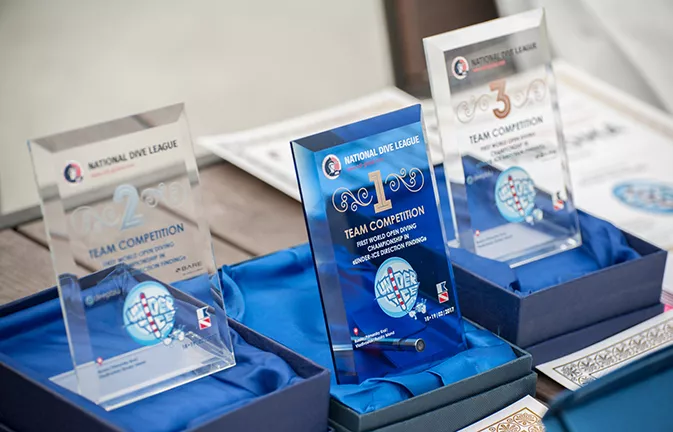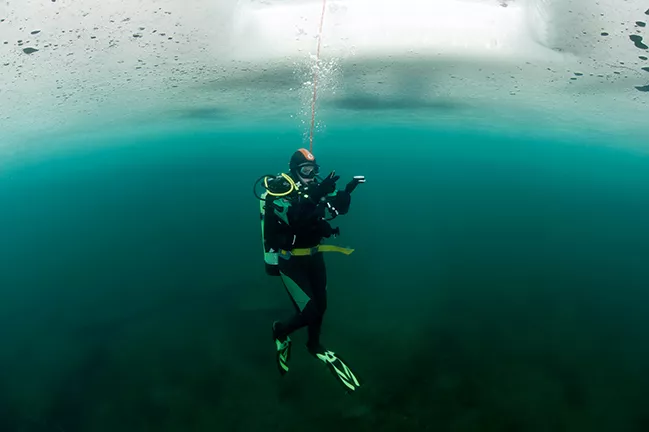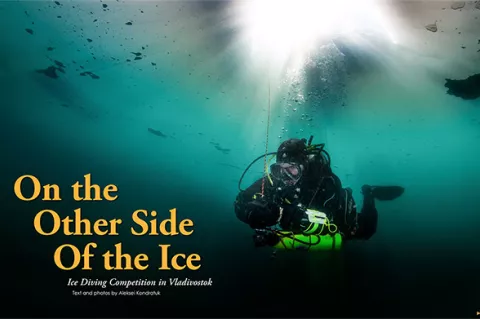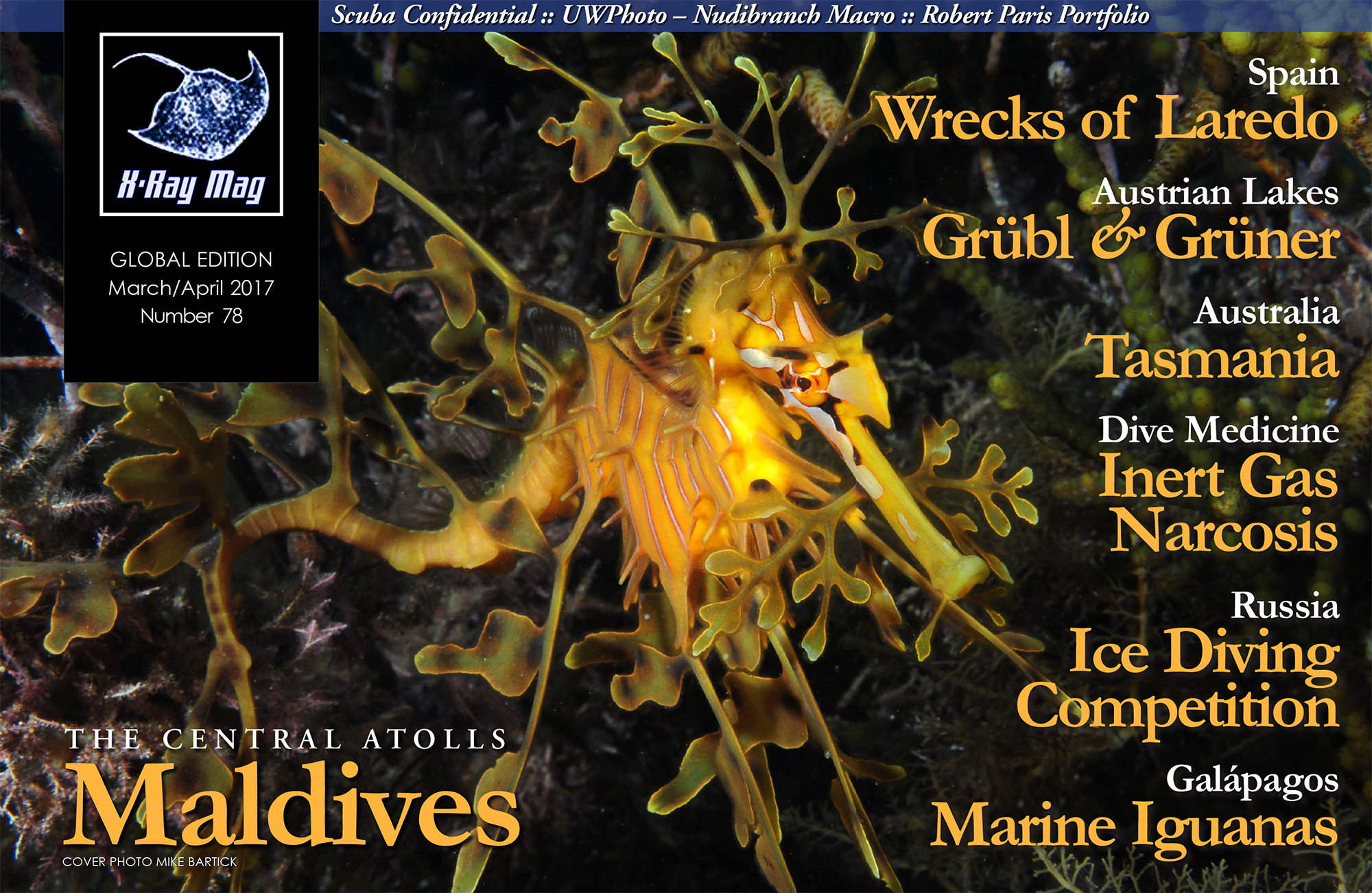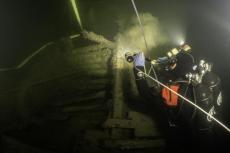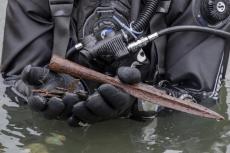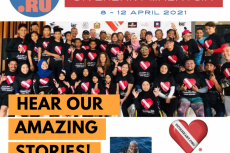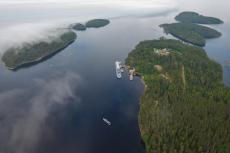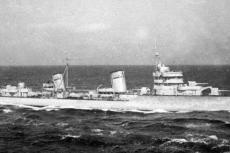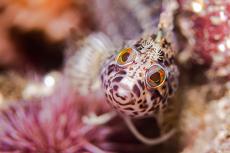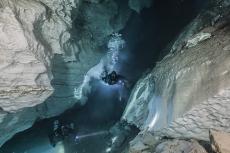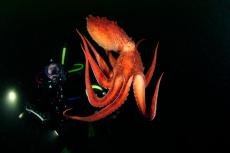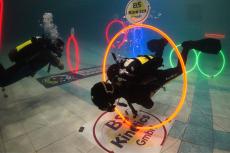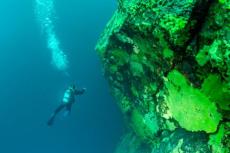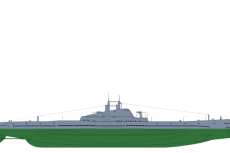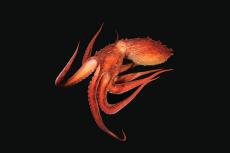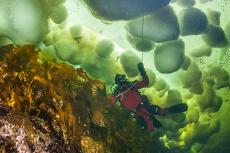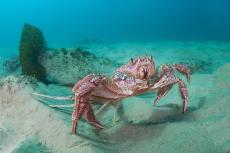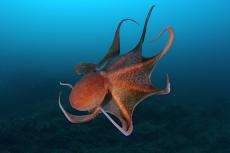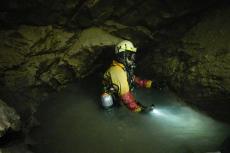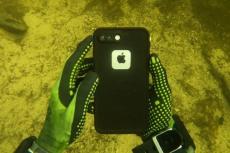If your home reef is covered in ice, do not rush to hang your fins on the wall. Ice above your head will make your underwater photos more spectacular! As the cold season has started where I live (in the Russian Far East), more and more divers are coming to dive the East Sea. This year, the Second World Open Diving Championship in “Under-Ice Direction Finding” was held in Vladivostok by the National Dive League of Russia.
Contributed by
As is now tradition, the championship took place in Novik Bay in February. The ice on the sea is the most stable during this month. Preparation for the competition was carried out over several weeks. It was necessary to take care of the accommodation of Russian and foreign competitors as well as to prepare a "field" for the competition. This year, the organizers decided to form ice lanes in the shape of an infinity symbol, marked with checkpoints, and to place entrances to the ice lanes in the center of each ring.
The depth of the reef was only seven meters. But there was a huge amount of the mud on the seabed, which could create problems with visibility for unwary divers. For safety, all divers descended with a safety line, pony bottle and knife or rope cutter. There was a member of the team at the surface, who set the safety line, using it to communicate with the competitor. Another team member at the surface stood ready to dive, in case of an emergency. To participate in the competition, all divers were required to have an Ice Diver certification.
So how did this ice diving competition come about? The idea for the competition was borrowed from the military. Military divers have to pass standards in navigating underwater dives within specific time limits, in difficult conditions in the overhead environments, whether it is a wreck or cave. This kind of training has become popular among recreation divers, and thus, eventually it evolved into the world championship competition.
There were 28 divers from 12 teams who responded to invitations from the organizers this year. Besides the Russian divers, divers from Italy and South Korea also participated. All competitors had to navigate the same length race course under the ice, but with different checkpoints.
The race
After pulling on a barely visible signal buoy on a rope in a hole in the ice, the diver must return to the start position where a judge checked the time (duration) of the dive. All participants had to perform a predetermined course (track) under the ice, using directions they received on a card prior to the dive. The main goal in the competition was not only to complete the predetermined course under the ice as quickly as possible, but also to do it right.
The competition was divided into two days. On the first day, there was the general classification of all the competitors. The final race was held on the second day. Three prize winners were selected for each of three categories, which included men’s individual, women’s individual, and the team competition.
Diving conditions
As for the diving conditions, this year's first day was sunny, with temperatures at about 0°C . The water temperature was -1°C. Visibility was around eight meters. But on the second day, weather brought a surprise for participants. Air temperatures dropped to -11°C, and the sky was overcast, with heavy cloud cover. As a result, visibility underwater was reduced by half.
Physical and mental challenges
Navigation under ice requires quite serious preparation. Ice diving involves diving in an overhead environment. You have one point of entry into the water, and one exit point, and they are usually in the same spot. In case of an emergency, the diver has no chance of aborting the dive and returning to the surface at any point, so mental preparation is very important.
Fear is common to all of us—it is a kind of defensive mechanism in any person who "enters a dark room." But in this case, the situation was specifically created for the competition, so one has to condition one’s mind to take it for granted.
Training and equipment
After you overcome your fears and want to go ice diving, it is very important to pay attention to technical training. The equipment must operate without failure! It is critical to use only cold water regulators. One must not forget to reduce pressure in the main regulator and the spare regulator for the pony bottle, in order to avoid free-flow in ice conditions. Also, you need to check the valves of your drysuit and BCD before the dive. It is important to choose the right drysuit undergarment, helmet and gloves, because you will have to be in water at negative temperatures for quite a while.
Physical training in preparation for ice diving should be at a high level too, because dives in such an environment requires not only courage, but also good physical shape. Each year more and more men and women with high skill levels are taking part in the competition.
Photography under the ice
I took part in the competition as a land and underwater photographer, and also served as the safety diver under the ice. Underwater photo reportage is good practice for the photographer. You have no time to think about camera settings—you have to "catch the moment."
The day before the competition, I drew small sketches to imagine what I would like to see in my camera viewfinder. In one of my sketches, I pictured a diver with sun rays in the background bursting into the ice lane. Then, on the day of competition, when one of participants entered the ice lane and began to run his course, I experienced a moment of "deja vu"—it was my "sketch"!
The role of "underwater reporter" has allowed me to capture interesting moments during the competition. In one of the dives, I followed one of the competitors like a shadow. When she came to the checkpoint and reached out to pull the marker buoy in the ice lane, the hand of a reporter with an action camera appeared in the frame of my viewfinder. This photo made my day!
My bottom time at each dive was more than an hour. During this time, I saw about eight participants. Both beginners and winners from previous competitions took part in this year's event, as evidenced in the varying skill levels of the participants.
Range of skill levels
The experience level of each competitor was visible right away. After the start of the race, the divers immediately began to move in one direction at an average depth, correcting their course along the way. Upon approaching a checkpoint, divers scrolled their compass reels to the next predetermined angle or direction, and began to move to the next checkpoint, without reducing speed.
Errors made by the beginners were all the same. After entering the water, they immediately started to look for the direction in which to swim, but in the meantime, they were falling to the bottom. Then they began to move, lifting sediment from the bottom. With the mud rising from the bottom, visibility was reduced, down to one to two meters. In these conditions, it was very difficult for them to see the buoy rope in the ice lane, and they had to spend more time on the race course. A lot of divers used frog-style kicks underwater, which were not very fast. It was better to use a simple style of finning in order to gain more time.
Results
Different skills and styles led to various time results: the fastest time on the ice diving course was 3 minutes 28 seconds for men and 3 minutes 35 seconds for women; and the slowest was 11 minutes 32 seconds, and 13 minutes and 21 seconds, respectively.
Finalists were chosen at the end of the first day. The winners in the individual competitions were selected on the second day. Prizes were also awarded to the winning teams formed by the participants. The award ceremony was held on the same day. Winners received prizes from the sponsors of the competition.
So what is the main purpose of these ice diving competitions? First of all, it unites divers and brings together people with similar interests. It allows people to experience the spirit of extreme diving events in a safe environment. It challenges one to defeat one’s fears, to become a better and stronger diver, because participation in such a competition is an excellent opportunity to improve one’s skills in ice diving and navigating under ice. ■
To book your team for next year’s competition, go to: Icedive.me.
For more information, visit Aleksei Kondratuk’s website at: UWvision.com.
Published in
-
X-Ray Mag #78
- Läs mer om X-Ray Mag #78
- Log in to post comments

